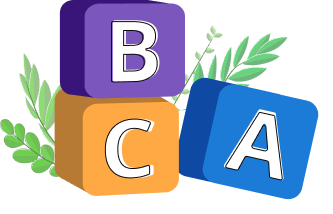
N/A
to make a hasty or premature judgment or decision without sufficient evidence or information

(magyaráz)
értelmez
to understand or assign meaning to something
Nyelvtani Információk:

(magyarázat)
értelmezés
an explanation that results from interpreting something


(rosszul értelmez)
félreért
to understand or explain something incorrectly
Nyelvtani Információk:


(mozdulat)
gesztus
a movement of the hands, face, or head that indicates a specific meaning
A gesture is a form of nonverbal communication that involves using physical movements of the body, particularly the hands and arms, to convey messages or express feelings. Gestures can include a wide range of actions, such as waving, pointing, or making specific hand shapes. They often enhance verbal communication by providing additional context or emphasis to spoken words. Gestures can also convey meanings on their own, serving as a complete message in situations where verbal communication may not be possible or appropriate. The meanings of gestures can vary significantly across cultures, making them an important aspect of social interaction and communication.

(szemkontakt)
szemkontaktus
contact that occurs when two people look directly at each other

N/A
used usually in a response to show that something may not be true

(megfigyel)
észlel
to notice something or someone
Nyelvtani Információk:


(figyelmes)
éleslátó
very good at or quick in noticing small details in someone or something

(észlelés)
megfigyelés
the act of noticing or paying attention

(összeállítás)
kombináció
a unified whole created by joining or mixing two or more distinct elements or parts together

(keresni vkit/vmit)
figyelni vmire
to actively search for or anticipate the arrival of someone or something
Nyelvtani Információk:


(izzadni)
izzad
to produce small drops of liquid on the surface of one's skin
Nyelvtani Információk:


(verejték)
izzadság
the body's way of cooling down with a salty liquid

N/A
to turn red in the face, often due to embarrassment or anger


(elpirul)
pirul
to become red in the face, especially as a result of shyness or shame
Nyelvtani Információk:


(állandóan)
folyamatosan
in a way that continues without any pause
Nyelvtani Információk:

(általánosítás)
generalizálás
the process of creating broad or universal principles by identifying common characteristics or patterns among specific instances


(jobb)
öklöző kéz
a hand with the fingers clenched in the palm (as for hitting)


(harag)
düh
a strong feeling that we have when something bad has happened, so we might be unkind to someone or harm them


(meghajlít)
hajt
to bend something in a way that one part of it touches or covers another
Nyelvtani Információk:


(karja)
kar
one of the two body parts that is connected to the shoulder and ends with fingers
An arm refers to the upper limb of the human body, extending from the shoulder to the hand. It consists of bones, muscles, tendons, and ligaments that work together to provide mobility and dexterity. The arm allows for a wide range of movements, including reaching, grasping, lifting, and manipulating objects. It plays a significant role in daily activities, such as writing, eating, and performing various tasks. The arm is crucial for both functional tasks and expressive gestures, contributing to overall physical capabilities and communication. Understanding the anatomy and function of the arm is essential for maintaining strength, coordination, and flexibility in this important part of the body.
Nyelvtani Információk:

N/A
to place one leg over the other, either while sitting or standing

(támadó)
védekező
attempting to justify or defend in speech or writing


(int)
jelez
to give someone a message, instruction, etc. by making a sound or movement
Nyelvtani Információk:

(jelezés)
jelzés
a gesture or action used to convey a message without using words


(taszít)
dől
to bend from a straight position typically to rest the body against something for support
Nyelvtani Információk:

(irányába)
felé
in the direction of a particular person or thing

(kiállít)
bemutat
to demonstrate a particular quality, feeling, skill, etc.
Nyelvtani Információk:

(kiállítás)
bemutató
something intended to communicate a particular impression


(csábít)
flörtöl
to behave in a way that shows a person is only sexually drawn to someone, with no serious intention of starting a relationship
Nyelvtani Információk:

N/A
to cross one’s arms over the chest, often expressing defiance, impatience, or relaxation

(tetszik)
kedvel
to feel attracted to someone in a romantic or sexual way
Nyelvtani Információk:
Gratulálok! !
33 szót tanult undefined-ből. A tanulás és a szókincs felülvizsgálata érdekében kezdje el a gyakorlást!
Áttekintés
Villámkártyák
Betűzés
Kvíz
